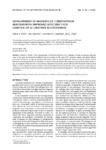Use este identificador para citar ou linkar para este item:
http://www.alice.cnptia.embrapa.br/alice/handle/doc/898276Registro completo de metadados
| Campo DC | Valor | Idioma |
|---|---|---|
| dc.contributor.author | MELO, I. S. de | pt_BR |
| dc.contributor.author | MORETINI, A. | pt_BR |
| dc.contributor.author | CASSIOLATO, A. M. R. | pt_BR |
| dc.contributor.author | FAULL, J. L. | pt_BR |
| dc.date.accessioned | 2011-08-18T11:11:11Z | pt_BR |
| dc.date.available | 2011-08-18T11:11:11Z | pt_BR |
| dc.date.available | 2011-08-18T11:11:11Z | pt_BR |
| dc.date.created | 2011-08-18 | pt_BR |
| dc.date.issued | 2011 | pt_BR |
| dc.identifier.citation | Journal of Plant Protection Research, Varsóvia, v. 51, n. 2, p. 5, 2011. | pt_BR |
| dc.identifier.uri | http://www.alice.cnptia.embrapa.br/alice/handle/doc/898276 | pt_BR |
| dc.description | Coniothurium minitans (CM) is hyperparasitic to Sclerotinia sderotiorum (55), a palhogen of many economically important crops. In this paper, we describe lhe isolation of improved mutants of CM, using a UV - irradiation regime, with altered chitinase production and tolerance to high concentration of iprodione, which are effect:iveagainst Ss. Three out of the 59 mutants obtained inhibited the mycelial growth of CM. Infectivity of sclerotia by the new mutants was assayed by the plant-tissue-based system using carrot segments. More than 80%of sclerotia were colonized by lhe mutants and the wild-type CM. The mutant strains retained ability to produce significant amounts of chitinase. The mutants differed frorn their wild-type strain in appearance, morphology and sporulation. In conclusion, the results presented here provide evidence that lhe new biotypes of C. minitans are effective in controlling S.sclemtiarum. | pt_BR |
| dc.language.iso | eng | eng |
| dc.rights | openAccess | eng |
| dc.subject | Coniothvrium minitans | pt_BR |
| dc.subject | Resistance | pt_BR |
| dc.subject | Antibiotic production | pt_BR |
| dc.title | Development of mutants of Coniothyrium minitans with improved efficiency for control of Sclerotinia sclerotiorum. | pt_BR |
| dc.type | Artigo de periódico | pt_BR |
| dc.date.updated | 2011-08-18T11:11:11Z | pt_BR |
| dc.subject.thesagro | Sclerotinia sclerotiorum | pt_BR |
| dc.subject.thesagro | Doença fúngica | pt_BR |
| dc.subject.thesagro | Controle biológico | pt_BR |
| dc.subject.thesagro | Fungo para controle biológico | pt_BR |
| dc.subject.nalthesaurus | Biological control | pt_BR |
| dc.subject.nalthesaurus | Antifungal agents | pt_BR |
| dc.subject.nalthesaurus | iprodione | pt_BR |
| riaa.ainfo.id | 898276 | pt_BR |
| riaa.ainfo.lastupdate | 2011-08-18 | pt_BR |
| dc.contributor.institution | ITAMAR SOARES DE MELO, CNPMA; ALEX MORETINI; ANA MARIA RODRIGUES CASSIOLATO, UNESP-Ilha Solteira; JANE L. FAULL, School of Biological Sciences. | pt_BR |
| Aparece nas coleções: | Artigo em periódico indexado (CNPMA)  | |
Arquivos associados a este item:
| Arquivo | Descrição | Tamanho | Formato | |
|---|---|---|---|---|
| 2011AP17.pdf | 997.57 kB | Adobe PDF |  Visualizar/Abrir |









